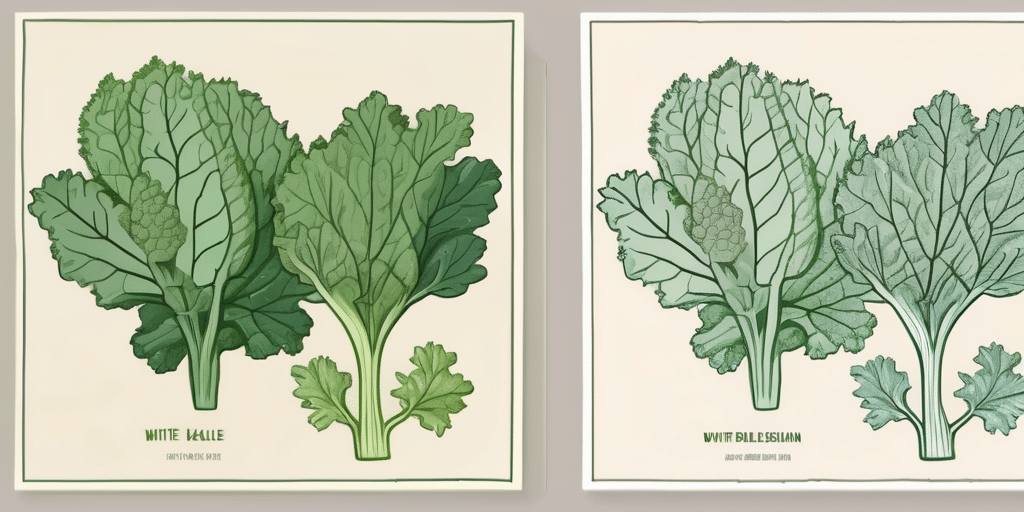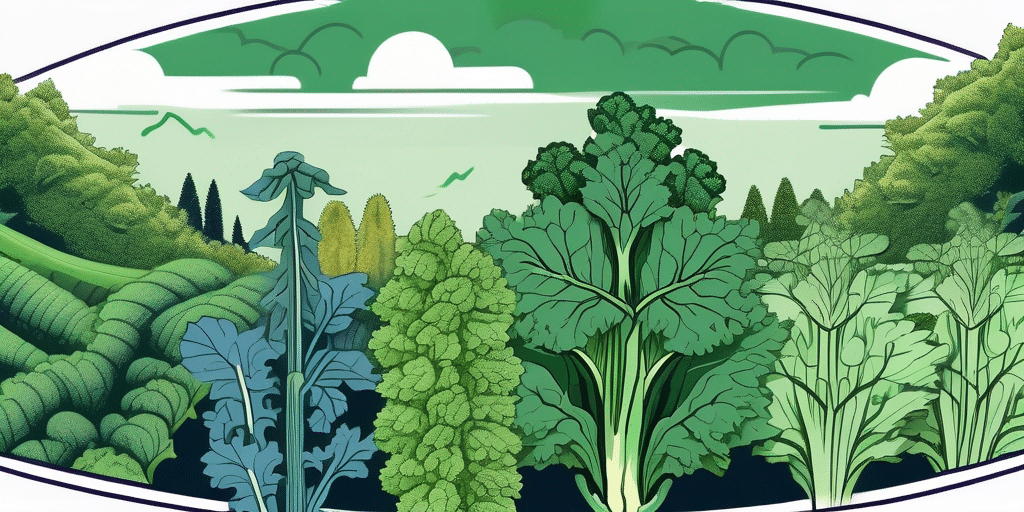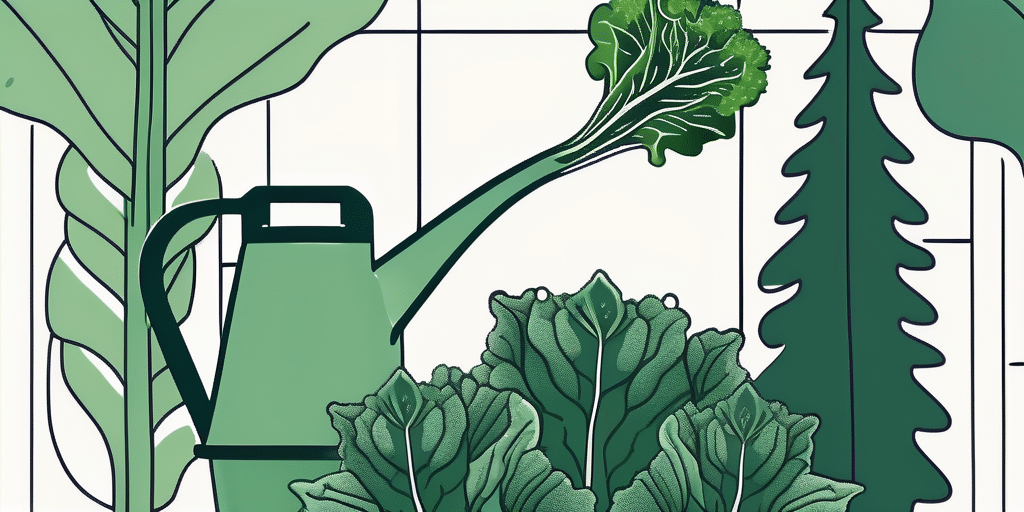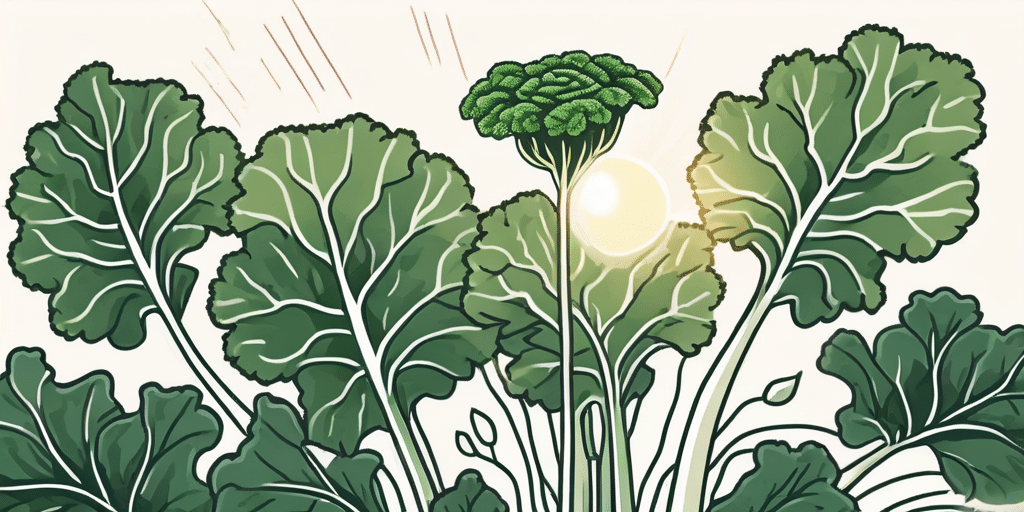Redbor kale is a beautiful and nutritious vegetable that can thrive in Alabama’s climate. If you’re wondering when to plant and how to grow this vibrant vegetable, you’ve come to the right place. In this article, we will explore the best time to plant redbor kale, the hardiness zones in Alabama, as well as harvesting tips and other frequently asked questions.
Climate & Hardiness Zones in Alabama
Before diving into when to plant redbor kale, it’s crucial to understand Alabama’s climate and hardiness zones. Alabama falls within USDA hardiness zones 7a to 9a, which means it experiences mild to moderate winters and hot, humid summers.
The state of Alabama boasts a diverse climate due to its varying topography. The northern part of the state, characterized by the Appalachian Mountains, experiences cooler temperatures compared to the southern regions near the Gulf of Mexico. This diversity in climate allows for a wide range of crops to be grown throughout the state.
Alabama’s rich soil and ample sunshine make it an ideal location for growing a variety of vegetables, including redbor kale. This nutritious leafy green thrives in well-draining, fertile soil with a pH level between 6.0 and 7.5. Adequate moisture is essential for the growth of redbor kale, so regular watering is recommended, especially during dry spells.
The ideal temperature range for growing redbor kale is between 60°F and 75°F. While it can tolerate some frost and heat, it’s always best to provide optimal growing conditions to ensure a successful harvest.
When to Plant Redbor Kale in Alabama
Timing is essential when it comes to planting redbor kale in Alabama. You want to make sure it has enough time to grow and mature before extreme temperatures set in.
The best time to plant redbor kale in Alabama is in early spring, around March or April. This allows the plant to establish itself before the heat of summer arrives. Fall planting can also be successful, starting in late August or early September.
Redbor kale, with its striking dark purple leaves, is not only a beautiful addition to your garden but also a nutritious one. Packed with vitamins A, C, and K, as well as antioxidants, this leafy green is a powerhouse of health benefits. Its slightly peppery flavor adds a unique twist to salads, smoothies, and stir-fries.
- Choose a sunny or partially shaded location in your garden.
- Prepare the soil by removing any debris and weeds.
- Loosen the soil and amend it with organic matter to improve drainage and fertility.
- Plant the redbor kale seeds or seedlings according to the package instructions, typically about 1/2 inch deep and 12-18 inches apart.
- Water the plants thoroughly after planting to settle the soil.
When selecting a location for your redbor kale, consider planting it near other companion plants like tomatoes, peppers, and herbs. These plants not only complement each other aesthetically but also work together to create a balanced ecosystem in your garden. Additionally, incorporating a layer of mulch around your kale plants can help retain moisture, suppress weeds, and regulate soil temperature, promoting optimal growth.
When to Harvest or Pick Redbor Kale in Alabama
Harvesting redbor kale is an exciting part of growing this beautiful vegetable. The leaves, with their deep purple-red color, are not only visually appealing but packed with nutrients.
Redbor kale can be harvested when the leaves have reached a size suitable for eating, typically around 3-4 inches in length. However, you can also harvest individual leaves as needed, allowing the plant to continue producing throughout the season.
Ensure that you harvest the outer leaves first, working your way inward. This method allows the inner leaves to continue growing and ensures a more extended harvest period.
When growing redbor kale in Alabama, it’s essential to consider the local climate and growing conditions. Alabama’s warm and humid climate can impact the growth and flavor of the kale. To combat this, provide adequate water and consider using mulch to retain moisture and regulate soil temperature.
Additionally, keep an eye out for common pests that may affect kale, such as aphids or cabbage worms. Regularly inspect the leaves for any signs of pest damage and take appropriate measures to protect your crop.
- Using a sharp pair of garden scissors or shears, cut the leaves about 1-2 inches above the base of the plant.
- Place the harvested leaves in a plastic bag or container and store them in the refrigerator.
- Remember to wash the leaves thoroughly before using them in your favorite recipes.
Frequently Asked Questions
Q: Can I grow redbor kale in containers?
A: Absolutely! Redbor kale can thrive in containers as long as you provide adequate soil, sunlight, and water. Choose a container with drainage holes and a well-draining potting mix. Keep in mind that container-grown plants may require more frequent watering compared to those planted in the ground.
Q: How long does redbor kale take to grow?
A: Redbor kale typically takes 55-75 days from planting to harvest. However, you can begin harvesting individual leaves much earlier, as needed.
Q: Can I freeze redbor kale?
A: Yes, you can freeze redbor kale to enjoy its nutritious goodness all year round. After harvesting the leaves, blanch them in boiling water for approximately 2 minutes, then transfer them to an ice bath to stop the cooking process. Once cooled, pat the leaves dry, place them in freezer bags or containers, and store in the freezer.
Q: Are there any pests or diseases that affect redbor kale?
A: Like any plant, redbor kale may encounter pests and diseases. Common pests include aphids, caterpillars, and flea beetles. Regularly inspect your plants for signs of infestation and consider using organic pest control methods if necessary. Diseases such as powdery mildew and clubroot can also affect kale. To prevent these diseases, provide proper air circulation, avoid overwatering, and practice crop rotation when possible.
Now that you have the knowledge to plant and grow redbor kale in Alabama, it’s time to get your hands dirty and enjoy a colorful and nutritious addition to your garden. Whether you’re a seasoned gardener or a beginner, this versatile vegetable will surely make a statement in your garden and on your plate.
But did you know that redbor kale is not only a delicious and nutritious addition to your meals, but it also has a fascinating history? Dating back to ancient Rome, kale has been cultivated for over 2,000 years. It was a staple in European diets during the Middle Ages and was even brought to the Americas by early European settlers.
Redbor kale, with its vibrant purple leaves, is a modern variation of this ancient vegetable. Its striking color not only adds visual interest to your garden but also indicates high levels of anthocyanins, powerful antioxidants that have been linked to various health benefits. So not only will you be enjoying a tasty vegetable, but you’ll also be nourishing your body with a powerhouse of nutrients.
Join How to Grow Everything for More Gardening Success
Ready to take your gardening to the next level? Subscribe for free to How to Grow Everything and learn how to build the garden of your dreams! Receive personalized gardening advice tailored to your Alabama grow zone, experience level, and interests. Our family is committed to helping you grow not just redbor kale, but everything your heart desires, with the best gardening tips and special offers delivered straight to your inbox. No spam, just 100% free, valuable insights to ensure your garden thrives. From our family to yours, let’s grow together!






